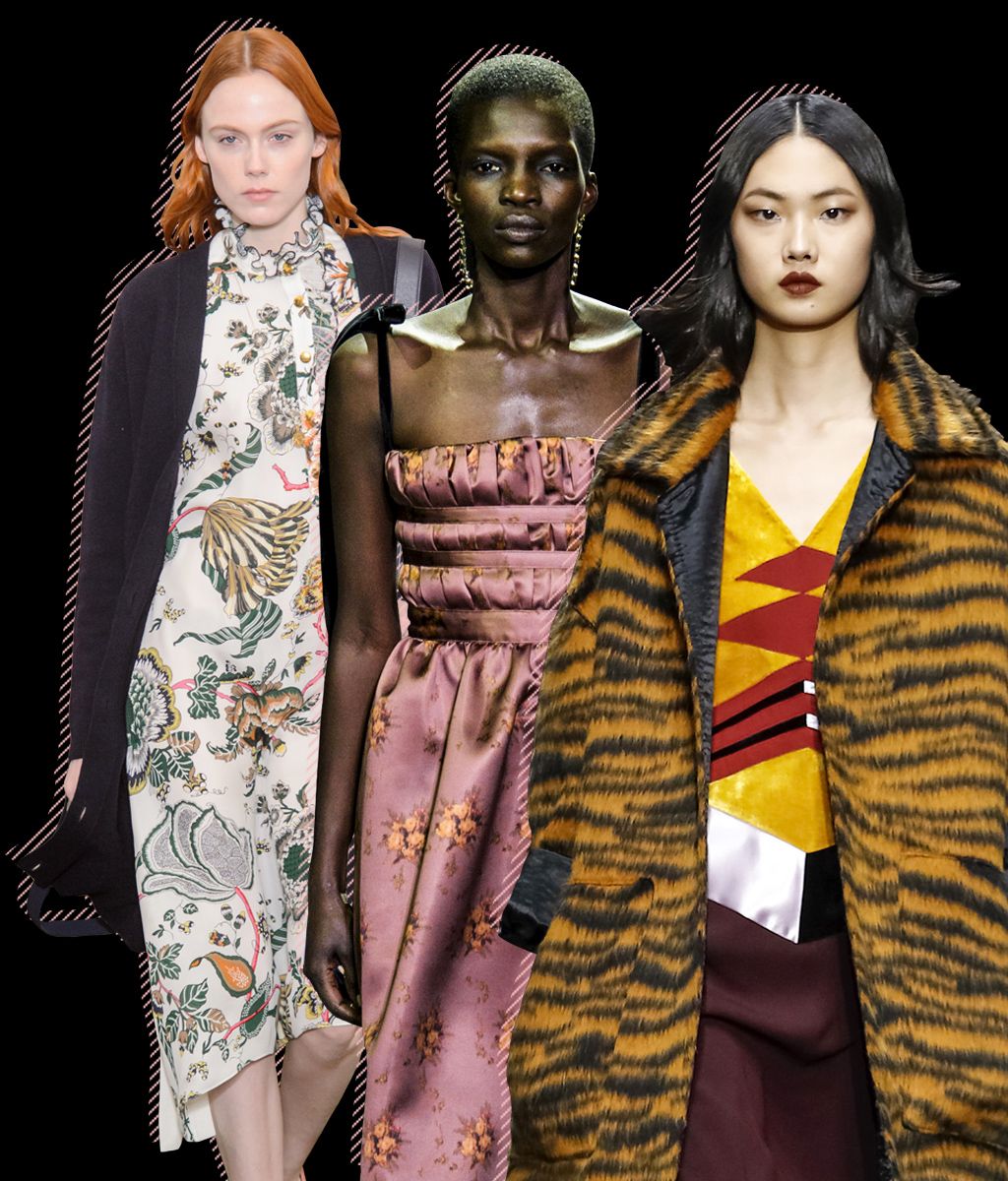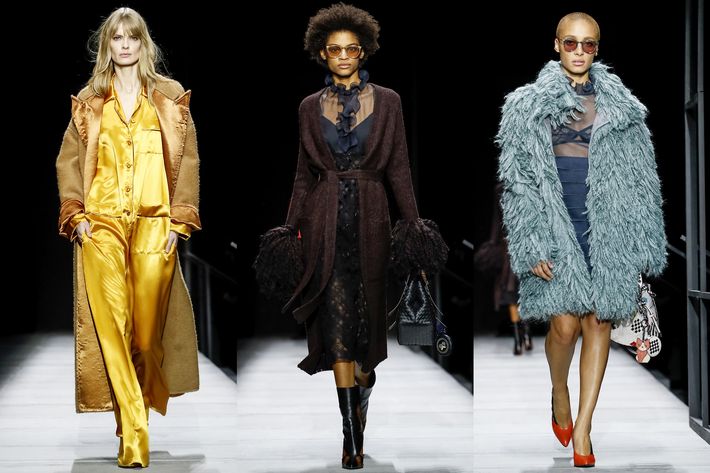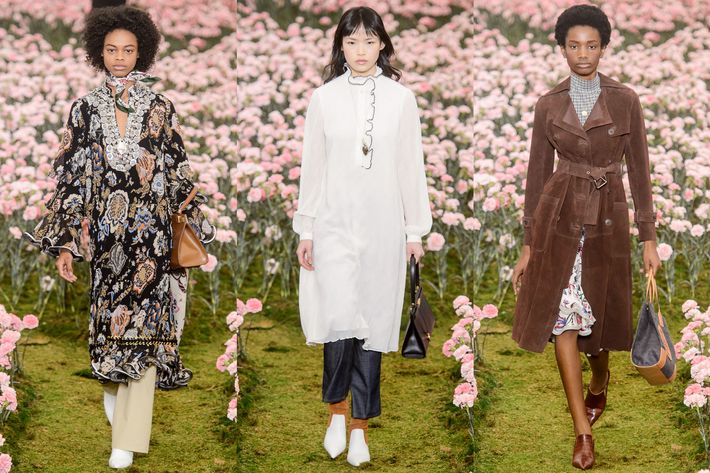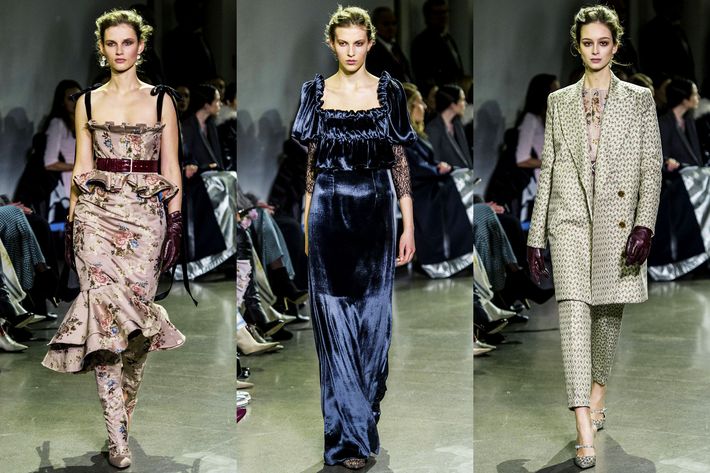
Yesterday, romance and big money returned to the runways of New York. Oh, it’s good to be home!
Seriously, I’m not sure what other themes NYFW can comfortably support. Sex is a landmine — unless, of course, you’re Jeremy Scott, and then nobody really cares. Feminism brings out dabblers and opportunists. Drugs make everyone nervous. But when were the New York runways ever a place for an insightful reflection on a cultural moment or an ingrained attitude? America is not the country that produced Mugler’s and Gaultier’s sexual outrage, Westwood’s bondage trousers, or Kawakubo’s bag ladies. But we did copy them and then sell the hell out of them.
To be sure, NYFW has seen a few kitsch cowboys and urban renegades over the years — designers like Todd Oldham, Miguel Adrover, and recently Shayne Oliver. But none disturbed the peace for long, or proved to be bankable. It’s tough to penetrate this country, both in scale and mind-set. Even the king of NYFW, Marc Jacobs, had to find success, and LVMH backing, in Europe in order to bring it to New York. Would Rick Owens have thrived if he had stayed in Los Angeles?
Tomas Maier, the German-born, Paris-trained designer of Bottega Veneta, certainly knows how America likes its bread buttered. Last night, at the American Stock Exchange, he re-created a plush apartment with all the modernist accoutrements — Gio Ponti furniture, a Chamberlain sculpture, a brutalist design scheme. At first, I thought the set, which included a freestanding gas fireplace, was intended to evoke a club or hotel suite — forgetting how much the hospitality business influences high-end interior design.
Maier opened with satin pajamas under soft coats that were a blend of either satin and mohair or suede and velvet. Texture has always been a strength, and this collection included a couple of fuzzy wool coats in unexpected shades of marigold and aquamarine, as well as a gorgeous long, espresso-colored cardigan with pom-pom cuffs. It was worn over a dark satin slip dress. Color blocking was another motif, and a number of Maier’s subtly jewel-toned satin slips might have been based on an Art Deco pattern — the Chrysler Building?
But ultimately this collection worked because the references were well blended, the colors and materials were rich in a muted, confident Bottega way, and because Maier knows that you can’t sell real estate in this town — or a collection — unless you address all the details and make them work in complete harmony.
Tory Burch also had a great show. A team of workers must have spent hours stabbing thousands of long-stemmed pink carnations on her runway, but the “field of flowers” effect was charming. And it suited the relaxed femininity of her dark floral silk dresses, a good-looking chocolate suede coat in a classic cut, and pretty, loose-fitting white dresses with lingerie lace and Victorian collars. The socialite Lee Radziwill was apparently the inspiration.
When I first met the designers Kris Brock and Laura Vassar, of the Brock Collection, they were committed minimalists. But they’ve gradually moved their style toward romantic flowers and feminine frills, though with a few plain pieces. I get it. Young women love romance, and minimalism is an extremely difficult path to stick with. Some of Brock and Vassar’s peplumed and flouncy styles in vintage rose patterns looked stilted compared to some of their recent collections (and perhaps a bit too close to old Nina Ricci designs), but they should feel free to play. It’s hard to stumble in a bed of roses.









